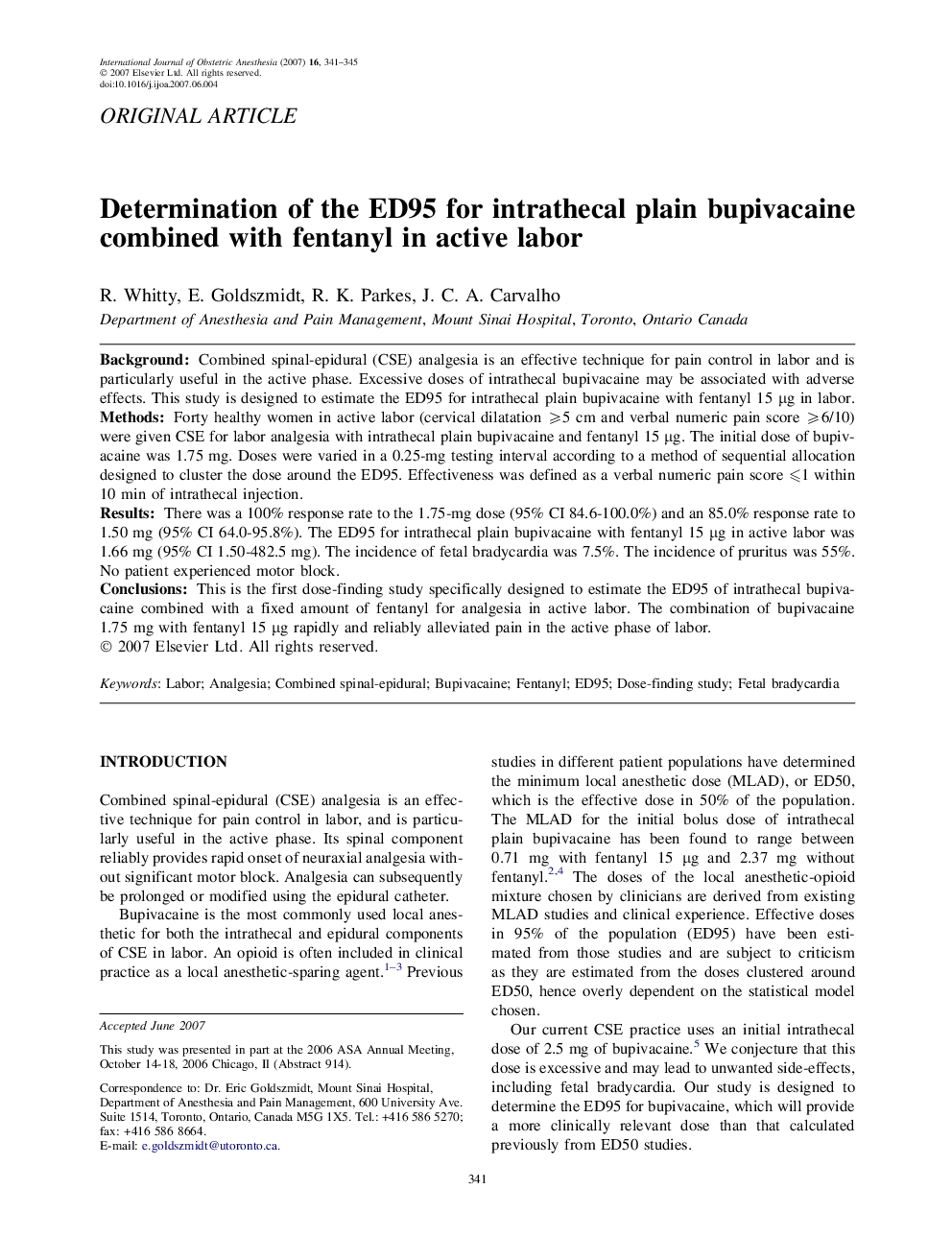| Article ID | Journal | Published Year | Pages | File Type |
|---|---|---|---|---|
| 2758558 | International Journal of Obstetric Anesthesia | 2007 | 5 Pages |
BackgroundCombined spinal-epidural (CSE) analgesia is an effective technique for pain control in labor and is particularly useful in the active phase. Excessive doses of intrathecal bupivacaine may be associated with adverse effects. This study is designed to estimate the ED95 for intrathecal plain bupivacaine with fentanyl 15 μg in labor.MethodsForty healthy women in active labor (cervical dilatation ⩾5 cm and verbal numeric pain score ⩾6/10) were given CSE for labor analgesia with intrathecal plain bupivacaine and fentanyl 15 μg. The initial dose of bupivacaine was 1.75 mg. Doses were varied in a 0.25-mg testing interval according to a method of sequential allocation designed to cluster the dose around the ED95. Effectiveness was defined as a verbal numeric pain score ⩽1 within 10 min of intrathecal injection.ResultsThere was a 100% response rate to the 1.75-mg dose (95% CI 84.6-100.0%) and an 85.0% response rate to 1.50 mg (95% CI 64.0-95.8%). The ED95 for intrathecal plain bupivacaine with fentanyl 15 μg in active labor was 1.66 mg (95% CI 1.50-482.5 mg). The incidence of fetal bradycardia was 7.5%. The incidence of pruritus was 55%. No patient experienced motor block.ConclusionsThis is the first dose-finding study specifically designed to estimate the ED95 of intrathecal bupivacaine combined with a fixed amount of fentanyl for analgesia in active labor. The combination of bupivacaine 1.75 mg with fentanyl 15 μg rapidly and reliably alleviated pain in the active phase of labor.
